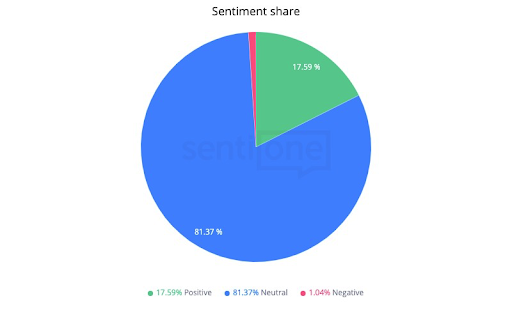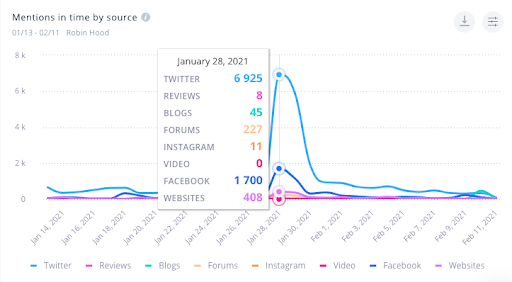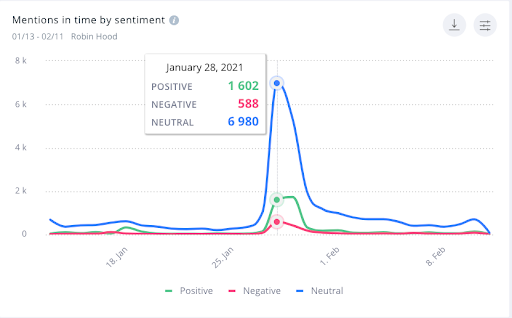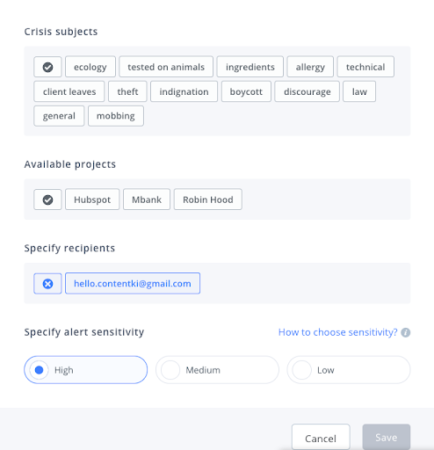How to avoid online reputation damage? Mistakes and best practices
Wouldn’t it be great if your brand only received good reviews? Unfortunately, the tough reality is that even the most client-oriented businesses have to occasionally deal with unflattering opinions. The key is to handle such situations effectively so that they don’t escalate into a full-blown PR crisis.
In fact, the consequences of online reputation damage can be unforgiving. For instance, well over a year after Facebook endured the Cambridge Analytica scandal, just 27% of users were able to maintain their trust in the platform’s security (a drop from 79% in early 2018).
How do you make sure that you avoid online reputation damage? In the following article, we share the best practices you can apply to keep your brand image on the positive side.
Best practices companies with good reputations follow
Do you know how companies like Disney, Ikea or Lego Group maintain their good reputations? Let’s take a look at some of their practices.
1. Looking at the ratio of positive to negative comments
When you take a look at customer loyalty metrics like the Net Promoter Score, you might feel relieved if you see a big group of people marked as “neutrals”. That’s a mistake – while this part of the audience doesn’t think badly of your brand, they don’t like it enough to spread the good word.
As far as online brand monitoring is concerned, it is important to evaluate all of your brand mentions, reviews, etc., to understand your audience’s sentiment. That said, you should focus on the ratio between negative and positive comments. While it will vary from industry to industry, the golden rule is to keep the percentage of negative opinions under 11%.
Here’s an example for the keyword “HubSpot” generated by SentiOne’s AI-powered Sentiment Share feature. What you can see below is an automatically calculated sentiment share between February 12th, 2020 and February 11th, 2021. As you can see, Hubspot is doing a great job at keeping bad PR under control.

2. Search for mention anomalies
Use an online reputation management tool that will alert you of any unusual changes in brand mentions, such as an unexpected spike in your brand name usage. This is of particular interest to your brand manager, who should also have the ability (and tools) to understand where the sudden interest comes from.

Here’s an example for Robinhood, a company that was on everyone’s lips during the GameStop scandal in early 2021. As you can see on the next image, there was a sudden rise in its mentions on January 28th, 2021, especially on Twitter. By reading the sentiment share on the following graph, you can understand whether the company’s PR was positive or not.

Solutions like SentiOne allow brand managers to investigate the root cause of anomalies like that by perusing the platform where it was detected. As a result, they’ll be able to react fast, address the problem, and manage the situation before it gets out of control.
3. If you’re a big brand, have round-the-clock moderation
Depending on your company structure and the number of timezones and markets you operate on, you might benefit from 24/7 moderation. It’s best to have someone monitor and respond straight away if an issue comes up beyond your office’s standard operating hours. If that’s not possible, no worries – you can set an alert for crisis-related keywords, which leads us to the next point.
4. Use a tool that detects crisis-related keywords
Let’s face it – it’s not possible to manually control what the entire Internet is saying about you, especially if you’re a big brand. To make sure you never miss an unfolding crisis, we recommend setting an alert. Here are some crisis-related subjects you can monitor:

5. Address both positive and negative comments
While it might be tempting to prioritize responding to positive comments, you should not leave negative ones unanswered. Both should be acknowledged and addressed. There’s a silver lining to negative feedback, and it can bring significant benefits. For instance, bad comments might give you an idea of how you can improve your service, while positive feedback shows which areas you already perform well in.
6. Stay active on social media
As of early 2021, as many as 79% of Western and Northern Europeans had a social media account. They were closely followed by North Americans, where the social network penetration rate was at 74%.
Considering these statistics – and the fact that people spend a significant amount of time on their phones – it’s important for businesses to have a social media presence. It gives them a chance to connect with their prospects and customers. What’s more, consumers frequently seek additional information about brands on social channels prior to purchasing – all the more reason to be on social media! According to Search Engine Watch buyers who are influenced by social media opinions are four times more likely to have a bigger shopping basket.
7. Monitor your overall online image
Pay close attention to what’s said about you online – you can use social listening tools such as SentiOne to track mentions. This is especially important when it comes to publications in popular media outlets, like The Verge. An unflattering review about Samsung’s curved TV was featured in the magazine right after its launch, which most likely had an adverse effect on sales, considering The Verge’s monthly traffic and the harsh language used in the review.
Here is a short excerpt from it:
“The curved screen demands that you sit dead center of the TV unless you want to observe the equally frustrated facial expressions of the person sitting opposite you on the couch trying in vain to see through the glare. The glare is ridiculous. It’s so completely terrible that I give up after watching something for 30 seconds and walk away whisper-yelling swears at my sucker of a husband for bringing this piece of **** into my home”.
Ouch!
Mistakes that might lead to online reputation damage
Now that we’ve shed light on the best practices, it’s time to mention the three most important mistakes to avoid.
Deleting negative comments instead of addressing them
Under any circumstances do not remove bad reviews unless agreed on with the people who posted them. Censorship hurts the credibility of brands and can have a devastating effect on the entire business.
Tracking mentions only on internal channels
You can’t limit your online review management to just your owned media channels – that is, your social media accounts, website, and review sites where you have an account. You should also monitor how your company name is used across a variety of external channels like news sites, other companies’ websites, social media hashtags, etc. Imagine missing a review like the one mentioned in the previous section, only to find out about it after your sales have already plummeted.
A lack of a contingency plan for escalating issues to the top of the organization
Your company must have a contingency for dealing with crises. You need to have an action plan – for instance, know when you have to urgently call a meeting after hours to react to an escalating issue. Do you have a step by step procedure for when a crisis rolls out?
The very basis of crisis management is using a tool that will alert you of any anomalies or crisis-related keywords. You can’t leave it down to your social media moderator, as they might wrongly underestimate the issue. Also, without an automated online review management solution, you won’t be alerted to a disheartening article within minutes of its publication.
Avoiding online reputation damage – concluding thoughts
Even companies with good reputations are subject to negative reviews. Sometimes it’s even not their fault, as people tend to wrongfully judge a product or service due to personal bias. While you might be tempted to simply remove bad reviews, you should refrain from doing so and politely address them instead. You might even be surprised to see that you can turn unhappy customers into loyal clients by making amends or simply admitting to a mistake.
Using a solution that alerts you to any brand mention anomalies, both in your owned and external media, is the absolute basis of effective brand management. Remember to investigate any changes in your brand sentiment share, and learn from the mistakes other brands have made in the past. That said, we highly recommend using an online reputation monitoring tool like SentiOne. If you’re interested in learning how it can help your boost your brand reputation, book a free demo!



